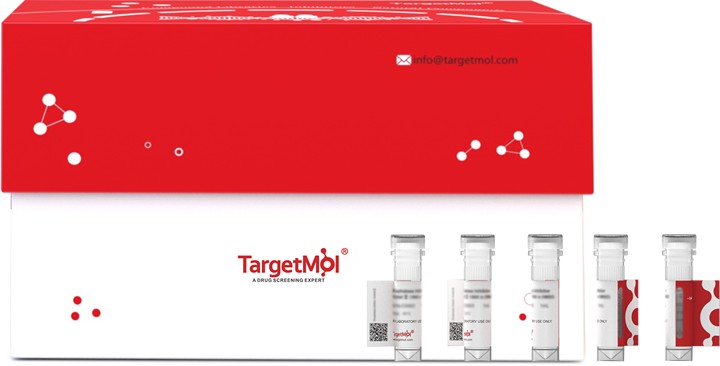- Remove All
 Your shopping cart is currently empty
Your shopping cart is currently empty
acnB Protein, E. coli, Recombinant
Escherichia coli contains two major aconitases (Acns), AcnA and AcnB. They are distantly related monomeric Fe-S proteins that contain different arrangements of four structural domains. acnA is specifically subject to SoxRS-mediated activation, whereas acnB encodes the major aconitase that is synthesized earlier in the growth cycle than AcnA. It is concluded that AcnB is the major citric acid cycle enzyme. Aconitate hydratase 2 (acnB) catalyzes the isomerization of citrate to isocitrate via cis-aconitate as well as the dehydration of 2-methylisocitrate to cis-2-methylaconitate, thus it functions as the major citric-acid-cycle enzyme during exponential growth. Escherichia coli acnB serves as either an enzymic catalyst or a mRNA-binding post-transcriptional regulator, depending on the status of its iron sulfur cluster. AcnB represents a large, distinct group of Gram-negative bacterial aconitases that have an altered domain organization relative to mitochondrial aconitase and other aconitases.

acnB Protein, E. coli, Recombinant
| Pack Size | Price | Availability | Quantity |
|---|---|---|---|
| 100 μg | $700 | 7-10 days |
Product Information
| Biological Activity | Activity testing is in progress. It is theoretically active, but we cannot guarantee it. If you require protein activity, we recommend choosing the eukaryotic expression version first. |
| Description | Escherichia coli contains two major aconitases (Acns), AcnA and AcnB. They are distantly related monomeric Fe-S proteins that contain different arrangements of four structural domains. acnA is specifically subject to SoxRS-mediated activation, whereas acnB encodes the major aconitase that is synthesized earlier in the growth cycle than AcnA. It is concluded that AcnB is the major citric acid cycle enzyme. Aconitate hydratase 2 (acnB) catalyzes the isomerization of citrate to isocitrate via cis-aconitate as well as the dehydration of 2-methylisocitrate to cis-2-methylaconitate, thus it functions as the major citric-acid-cycle enzyme during exponential growth. Escherichia coli acnB serves as either an enzymic catalyst or a mRNA-binding post-transcriptional regulator, depending on the status of its iron sulfur cluster. AcnB represents a large, distinct group of Gram-negative bacterial aconitases that have an altered domain organization relative to mitochondrial aconitase and other aconitases. |
| Species | E. coli |
| Expression System | E. coli |
| Tag | Tag Free |
| Accession Number | P36683 |
| Synonyms | yacJ,yacI |
| Construction | A DNA sequence encoding the E.Coli (strain K12) acnB (P36683) (Met 1-Val 865) was expressed and purified. Predicted N terminal: Met 1 |
| Protein Purity | > 97 % as determined by SDS-PAGE |
| Molecular Weight | 93.5 kDa (predicted); 95 kDa (reducing conditions) |
| Endotoxin | Please contact us for more information. |
| Formulation | Lyophilized from a solution filtered through a 0.22 μm filter, containing 40 mM Tris, 1 mM DTT, pH 8.2. Typically, a mixture containing 5% to 8% trehalose, mannitol, and 0.01% Tween 80 is incorporated as a protective agent before lyophilization. |
| Reconstitution | A Certificate of Analysis (CoA) containing reconstitution instructions is included with the products. Please refer to the CoA for detailed information. |
| Stability & Storage | It is recommended to store recombinant proteins at -20°C to -80°C for future use. Lyophilized powders can be stably stored for over 12 months, while liquid products can be stored for 6-12 months at -80°C. For reconstituted protein solutions, the solution can be stored at -20°C to -80°C for at least 3 months. Please avoid multiple freeze-thaw cycles and store products in aliquots. |
| Shipping | In general, Lyophilized powders are shipping with blue ice. |
| Research Background | Escherichia coli contains two major aconitases (Acns), AcnA and AcnB. They are distantly related monomeric Fe-S proteins that contain different arrangements of four structural domains. acnA is specifically subject to SoxRS-mediated activation, whereas acnB encodes the major aconitase that is synthesized earlier in the growth cycle than AcnA. It is concluded that AcnB is the major citric acid cycle enzyme. Aconitate hydratase 2 (acnB) catalyzes the isomerization of citrate to isocitrate via cis-aconitate as well as the dehydration of 2-methylisocitrate to cis-2-methylaconitate, thus it functions as the major citric-acid-cycle enzyme during exponential growth. Escherichia coli acnB serves as either an enzymic catalyst or a mRNA-binding post-transcriptional regulator, depending on the status of its iron sulfur cluster. AcnB represents a large, distinct group of Gram-negative bacterial aconitases that have an altered domain organization relative to mitochondrial aconitase and other aconitases. |
Dose Conversion
Calculator
Tech Support

Copyright © 2015-2025 TargetMol Chemicals Inc. All Rights Reserved.


